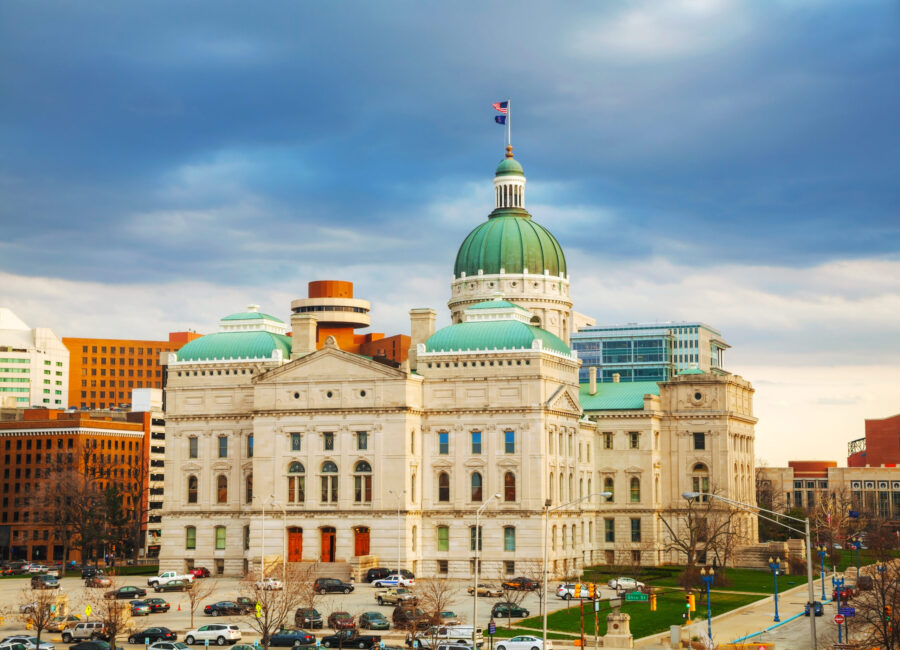The Indy Chamber exists to accelerate the Indy region’s economy for all, helping Central Indiana and the state to lead the Midwest and compete globally, driven by the strength of People, Place, and Business.
Central Indiana leads all other Midwest metros in economic growth. However, the Midwest lags behind the nation’s top-performing regions. Now is the time to accelerate Indiana’s economic momentum by prioritizing talent retention and attraction, improve health outcomes for Indy’s residents while covering the Medicaid shortfall, funding our communities’ infrastructure, and investing in Hoosier startups.
PEOPLE
Indiana faces a critical talent gap, with 140,000 unfilled jobs today and only 110,000 additions to the skilled workforce projected between 2025 and 2050. Despite being a top 10 importer of college students, the state struggles with retention, losing 34,000 graduates annually within a year of degree completion, placing it in the bottom 10 nationally. At the same time, only 39 percent of adults hold an associate degree or higher, and college enrollment among high school graduates has dropped to 53 percent, down from 65 percent in 2015. With 72 percent of U.S. jobs expected to require education beyond high school by 2031, Indiana must address these challenges by increasing state funding for graduate retention programs and strengthening employer engagement in work-based learning pathways to attract, develop, and retain skilled talent.
Indiana’s high smoking rate—the eighth highest in the nation—continues to undermine health and economic growth. Smoking costs every Hoosier household, whether they smoke or not, an average of $1,134 annually in taxes to cover smoking-related government expenses. Businesses face an additional $3.1 billion each year in smoking-related healthcare costs. Raising the cigarette tax by at least $2 per pack is a proven way to reduce smoking rates and associated costs, generating up to $356 million annually to help close the state’s Medicaid shortfall.
PLACE
The health of Indiana’s communities relies on quality infrastructure, yet local governments face a $2.4 billion funding gap to repair roads and bridges in poor condition. Strained by high inflation and declining gas tax revenues, the state struggles to maintain existing infrastructure and fund transformative projects. To stay competitive, Indiana must establish sustainable, fuel-agnostic revenue streams, such as expanded tolling to share costs with out-of-state drivers and regional tax mechanisms for targeted investments. Local wheel taxes should also increase to bolster infrastructure funding. A pro-growth funding model that allocates dollars based on traffic is critical to ensuring all communities thrive.
BUSINESS
Empowering skilled people to create new businesses is essential for the dynamism of our communities. Hoosier higher education and the state’s history of successful startups create a robust environment for entrepreneurship. However, Indiana launches significantly fewer new ventures than similarly sized coastal markets and has far less venture capital available ($5 billion in Indiana vs. $320 billion in Massachusetts).
Indiana should continue strong state investment in Hoosier startups, ensuring fund management that maximizes deployment of funds for startup creation and growth, and continue to enhance the state’s tax environment to encourage business starts and sustainability.
The Indy region and the state of Indiana are on the brink of a bright future. Hoosier businesses are the backbone of our economy. What they need most is for Indiana to invest in its people and the communities that support them. By nurturing our talented workforce and enhancing our vibrant places, we can unlock our great state’s full potential for prosperity.
Matt Mindrum
President & CEO, Indy Chamber
John Hirschman
President & CEO, Browning
Chair – Board of Directors, Indy Chamber

